Stephen Batchelor err on accumulated karma
Stephen Batchelor err on accumulated karma |
- Stephen Batchelor err on accumulated karma
- Buddhist Tours The Spiritual Face of India
- Ancient Buddhist learning center Taxila is one of the most endangered sites in Asia
- Shambhala International debuts ShambhalaNews
- Mood of meditation at Buddhist Temple
- Empty Gate Zen Buddhist Center takes American approach to Korean Buddhism
- Shinnyo-en Leads 14th Annual Lantern Floating Hawai'i
- Forest Walking II
- Mihintale: Monastic complex of two thousand monks
- Malaysia: Respect the cultural features of all communities
- The Dalai Lama’s special teachings for Tibetan youth and Indian Buddhists
- Head monk of Kyoto temple takes Buddhist into the community
- Seeking the core of Korean Meditation
- Dalai Lama encourages Chinese to seek solace in Buddhist
- Mindful war
| Stephen Batchelor err on accumulated karma Posted: 27 May 2012 09:00 AM PDT by Paul Griffin, The Buddhist Channel, May 26, 2012Stephen Batchelor's interpretation linking science with Buddhist (Does Buddhist need the supernatural stuff?), while accepting the law of cause and effect, is inconsistent in not providing any explanation of what happens to accumulated karma after death. Buddhist doctrine of course definitely refers to reincarnation, for example the Anguttara Nikaya 6/63 states: "Threefold however, is the fruit of karma: ripening during the lifetime, ripening in the next birth, ripening in later births......". Read More @ Source A further difference is that the scientific method is analytical, it breaks things down into their component parts, wheras Buddhist proceeds towards an expansive synthesis, i.e. the four boundless states, the four immaterial spheres and indeed the central doctrine of non-self is opposed to the scientific focus on 'identity'. |
| Buddhist Tours The Spiritual Face of India Posted: 27 May 2012 08:00 AM PDT Ezinemark.com, May 25th, 2012New Delhi, India -- From ages, India has witnessed birth of many religion and spiritual doctrines, which later spread across the world like a phenomenon. India is the holy land where many divine incarnations were born to show a positive direction to human evolution. Lord Buddha is the incarnation who created the religious philosophy of Meditation in India. Thus, Buddhist tours adjudged, as the spiritual face of India is apt from every aspect.
Bodh Gaya: The holy place where Lord Buddha undertook vigorous meditation to attain self-enlightenment is the heart of Buddhist tour in India. Devotees from across the world visit Bodh Gaya to witness the origin of the most followed religion known as Meditation. The major attractions are Mahabodhi Temple, Jain temple, Buddhist monasteries, and other remains of Buddhist significance. Sarnath: This is the most important aspect of Buddhist pilgrimage in India and scriptures states that Lord Buddha after attaining nirvana preached the principles of Meditation at Sarnath for first time. The major attractions at this sanctified place are the groves where Lord Buddha used to preach the religious fanatics, Dhameka Stupa, pillar of Ashoka, sculptures of bygone epoch and artifacts remains of Lord. These vacations book Buddhist tours the most spiritual facet of India tours to enhance soul with higher knowledge of existence. Let the spiritual face of India becharms you to discover the spiritual side of your nature for a religious inclination of self. Read More @ SourceBuddha's Story and Battle with the Evil One This posting includes an audio/video/photo media file: Download Now |
| Ancient Buddhist learning center Taxila is one of the most endangered sites in Asia Posted: 27 May 2012 07:00 AM PDT by Walter Jayawardhana, The Buddhist Channel, May 26, 2012Taxila, Pakistan -- The ancient Buddhist learning center of higher education Taxila, situated in modern Pakistan has been declared one of the most endangered historical sites in Asia by the Global Heritage Fund which promotes the preservation of historic architectural sites around the world.
Taxila is in the Rawalpindi District of Punjab province of Pakistan, and an important archaeological site. The city dates back to the Gandhara period and contains the ruins of the Gandharan city of Takshasila, which was an important Hindu and Buddhist centre, and is still considered a place of religious and historical sanctity in those traditions. In 1980, Taxila was declared a UNESCO World Heritage Site, and was ranked as the top tourist destination in Pakistan by The Guardian newspaper in 2006.
A complex of caves, monasteries, and mosques, the city of Taxila in Pakistan was a crossroads of industry in the ancient Middle East. Four distinct settlement sites—each belonging to different time periods - show the evolution of urban development over the course of five centuries, beginning in the sixth century B.C., according to the Global Heritage Fund. Today the ruins and nearby Taxila Museum suffer from insufficient management - some areas of the site serve as garbage dumps, for example. Other threats include looting, the toll of regional war, and uncontrolled mine blasts that shake excavated artifacts from museum shelves. References in ancient texts In the Mahabharata, the Kuru heir Parikit was enthroned at Takasila. Traditionally, it is believed that the Mahabharata was first recited at Takasila by Vaishampayana, a disciple of Vyasa at the behest of the seer Vyasa himself, at the Sarpa Satra Yajna (Snake Sacrifice) of Parikit's son Janamejaya. Takshashila is also described in some detail in later Jataka tales, written in Sri Lanka around the 5th century. The Chinese monk Faxian (also called Fa-Hien) writing of his visit to Taxila in 405 CE, mentions the kingdom of Takshasila (or Chu-cha-shi-lo) Xuanzang (also called Hieun Tsang), another Chinese monk, visited Taxila in 630 and in 643, and he called the city as Ta-Cha-Shi-Lo. The city appears to have already been in ruins by his time. Taxila is called Taxiala in Ptolemy's Geography. In the Historia Trium Regum (History of the Three Kings) composed by John of Hildesheim around 1375, the city is called Egrisilla. Ancient centre of learning Takshashila became a noted centre of learning at least several centuries BCE, and continued to attract students from around the old world until the destruction of the city in the 5th century. At its height, it has been suggested that Takshashila exerted a sort of "intellectual suzerainty" over other centres of learning in India., and its primary concern was not with elementary, but higher education. Generally, a student entered Takshashila at the age of sixteen. The Vedas and the Eighteen Silpas or Arts, which included skills such as archery, hunting, and elephant lore, were taught, in addition to its law school, medical school, and school of military science. Students came to Takshashila from far-off places such as Kashi, Kosala and Magadha, in spite of the long and arduous journey they had to undergo, on account of the excellence of the learned teachers there, all recognized as authorities on their respective subjects. Famous students and teachers Takshashila is perhaps best known because of its association with Chanakya, also known as Kautilya, the strategist who guided Chandragupta Maurya and assisted in the founding of the Mauryan empire. The Arthashastra (Sanskrit for The knowledge of Economics) of Chanakya, is said to have been composed in Takshashila itself.The Ayurvedic healer Charaka also studied at Taxila.He also started teaching at Taxila in the later period. The ancient grammarian Panini, who codified the rules that would define Classical Sanskrit, has also been part of the community at Takshashila. The institution is very significant in Buddhist tradition since it is believed that the Mahayana branch of Buddhism took shape there. Jivaka, the court physician of the Magadha emperor Bimbisara who once cured the Buddha, and the enlightened ruler of Kosala, Prasenajit, are some important personalities mentioned in Pali texts who studied at Takshashila. Read More @ SourceDong Mau Anh Hung: The Rebel - Villa Fight This posting includes an audio/video/photo media file: Download Now |
| Shambhala International debuts ShambhalaNews Posted: 27 May 2012 06:00 AM PDT
You can visit the new website here. Read More @ SourceCompassion Without Limit Part 1 of 14 This posting includes an audio/video/photo media file: Download Now |
| Mood of meditation at Buddhist Temple Posted: 27 May 2012 05:00 AM PDT By John Curry, EMC News, May 24, 2012Stittsville, Ontario (Canada) -- Except for the intermittent sounds of traffic passing by on Hazeldean Road filtering into the building and the ticking of a wall clock, silence reigned in Stittsville's Cambodian Buddhist Temple on Thursday evening, May 17 as Bhante Kovida led attendees through meditation exercises.
One involved moving the hands in a rotational cycle, while touching the body at certain points. These movements and touches enhance a person's awareness of the moment and helps eliminating random thoughts from the mind. In this way, these hand and arm movements are a roadway to a state of meditation. This exercise was followed by a half hour of controlled breathing, again with an air of silence pervading the Temple. Bhante Kovida urged those present to be aware of the rising and falling of the chest area as they breathed in and then breathed out. He advised that concentrating on breathing helps focus the mind.
The breathing segment of the session ended with the controlled breathing continuing but with the participant moving the head back and forth slowly with the in and out of the breathing. This was followed by moving the head side to side in unison with the breathing. At 7:55 p.m., almost an hour after the meditation exercises had begun, they were over - the silence was ended as Bhante Kovida then offered some explanations and responded to a number of questions directed his way. He explained that an untrained mind is susceptible to ignorance and delusion which in turn give birth to self-centred cravings, as well as hatred and ill-will including jealousy and resentment. However, he continued, a calm mind will give insight. "The aim of this practice (meditation) is to purify the mind of these defilements or these mental pollutions," Bhante Kovida said, adding that these so-called mental pollutions cause suffering. The untrained mind is reactive, he said. "The mind is always going between liking and not liking and wanting and not wanting or aversion," he said, noting that Buddhism believes that if the mind is trained, then the mind will not be so reactive and will remain more peaceful. Bhante Kovida advocates overcoming any conditioning that directs people to reacting to conditions. Instead, he wants people not to react but simply to rationally observe. "When you see, just see," he says. "When you hear, just hear." He said that the meditation practices which he advocates are meant to focus the mind. He said that for some people, activities such as running or swimming do this. He says that he is supportive of anything that helps a person bring his or her mind to the present moment, embracing calmness and peace. He urged those present to be calm and patient when they come upon obstacles in life and not give in to anger or frustration or anxiety. He also advised not to become too attached to the things of the world because eventually everyone has to leave the world in death. Bhante Kovida, who has been leading meditation sessions at the Cambodian Buddhist Temple on Hazeldean Road in Stittsville, is a skilled teacher of meditation and spirituality meant to help people balance their lives. He grew up in Jamaica and immigrated to Canada where he obtained a science degree. He then travelled overland from Europe to India and Nepal where he began the study of Indian history and culture, Hatha Yoga and meditation, classical Indian music and Buddhism. Bhante Kovida has travelled extensively in Southeast Asia including Australia and New Zealand, teaching meditation and some Qi Gong exercises. He has written two books: "An Inquiring Mind" in 2003 and "The World Is Myself" in 2008. These books are available through www.bhantekovida.com Bhante Kovida emphasizes that the most important goal of spiritual practice is the understanding of ourselves on a deeper level including understanding the nature of the human condition, why there are problems, why there is suffering and how to overcome suffering. His meditation program is geared to teach essential skills and practices necessary to restore the body and the mind. The impact of stress in daily living can be reduced through mediation. Bhante Kovida's program includes guided meditation and exercises to promote practical wisdom, mind and body awareness exercises, breathing techniques used to reduce mental and physical tensions and guided relaxation. He believes that these meditation techniques have the capacity, when practiced on a regular basis, to develop an ability to reduce anxiety and tensions. Read More @ SourceHow to Make a Mala Part 4 - The Tassel This posting includes an audio/video/photo media file: Download Now |
| Empty Gate Zen Buddhist Center takes American approach to Korean Buddhism Posted: 27 May 2012 04:00 AM PDT By Tammy Quackenbush, Yonhap News, May 24, 2012SAN FRANCISCO, CA (USA) -- With more than 80 Buddhist centers ringing California's San Francisco Bay, the area is hardly bereft of such belief. But two stand out among them, specializing in what has remained in Korea a less dominant sect: Korean Seon (Zen) Buddhism. One of the centers also stands out for its approach to teaching.
The Empty Gate Zen Buddhist Center is the larger of the two zen-based centers, located in the heart of the East Bay city of Berkeley near the University of California campus. The center has a loose affiliation with Korea's Jogye order, the country's largest Buddhist sect, but its membership is with the Kwan Um School of Zen, which was established by Seung Sahn, the first Zen master to live and teach in the West. "The Kwan Um School and the Jogye order are separate," explained Jason Quinn, former resident abbot at the Empty Gate. "Master Seung Sahn came from the Jogye order, but we are independent from the Jogye order." Empty Gate actively reaches out to non-Koreans desiring to learn Buddhism, both in the Berkeley center, through its Web site (www.emptygatezen.com), by e-mail, Internet, telephone and on social media such as Facebook (facebook.com/emptygatezen), Twitter (@emptygatezen) and YouTube. These modern approaches to ancient practices came from Quinn's desire to reach those who were seeking authentic Buddhist practice and meditation, but were too far away from a Zen center to practice in person. The success of the online outreach is due, in part, to his experience with audio-visual technology.
The tenacity has paid off. Empty Gate's online following dwarfs in-person membership with more than 1,200 Facebook page likes and more than 650 Twitter profile followers. Empty Gate streams live teachings Sundays at 7 a.m. One Wednesday a month at 8 p.m., the center streams a dharma talk by Empty Gate Zen Master Bon Seong. The dharma talks are geared toward novices. "We also teach by correspondence via email," Quinn said. "Our guiding teacher also does some kong-an interviews via Skype for those who are living in isolated areas far away from a Zen center." The building Empty Gate Zen currently occupies near the university was built in 1930 and lived several prior lives as a church, a dance studio and a belly-dancing studio before its 1997 reincarnation as Empty Gate Zen's non-residential meditation center.
The center has undergone a metamorphosis of its own. Master Seung Sahn founded it in 1977 as a residential center where Buddhist monastics could live in full-time ministry and meditation. By the time they moved to their current location in 1997, Empty Gate was no longer a residential Zen meditation center. Abbot Quinn is the center's only full-time resident. Most of the Kwan Um Zen centers in the U.S. are also non-residential. An early resident of Empty Gate Zen was Robert Buswell, currently a distinguished professor of Buddhist Studies in the Department of Asian Languages at the University of California, Los Angeles. He was a resident monk there from 1979-81. "It was a residential center at that time," he said. "It was the only Korean Zen Buddhist center in the area. I was a Jogye order monk at the time... There were many things that were familiar to me, but some also unfamiliar. The Korean chanting, which is actually Korean-transliterated Chinese, was very familiar, but some of the other practices were new to me." One of the differences that any follower of Korean Zen Buddhism would quickly notice is the less restrictive dress code that allows lay Buddhist practitioners to wear the long grey robes associated with Buddhist clergy in Korea. Visible on entering the main mediation room of Empty Gate Zen was a simple coat rack, from which hung student's long robes and name tags. These robes are optional, but once the students are robed, the uninitiated would find it difficult to differentiate monk from layperson. Empty Gate is not alone in its mission to reach out to North Americans with its knowledge of Korean Zen Buddhism. It is one of more than 30 Korean Zen Buddhist centers affiliated with the Kwan Um School. Based in Providence, Rhode Island, the Kwan Um School was founded by Zen Master Seung Sahn in 1983, six years after he founded the Empty Gate Zen Center. Master Seung Sahn discovered that Americans already had their own ideas about Buddhism, according to Buswell. Many of Master Seung Sahn's earliest students had some knowledge of Japanese Zen Buddhism. That experience colored their expectations of Buddhism, so he adapted his teaching style and developed what Buswell calls "an American-Korean-oriented school of Buddhism." Quinn said the Kwan Um School method uses different techniques to point to the same ideas. "The Buddha said that the different practices are different fingers pointing to the same moon..." Quinn said. "For example, Koreans use metal chopsticks, Indians use their fingers and Americans use a knife and fork. Which one is better? None of them. They all get food in to your stomach, but we get attached to the utensils." Empty Gate Zen Center morning practice sessions all begin with the 108 prostrations of repentance. Some of the chants and sutras are recited in Korean or Korean-transliterated Chinese, but fluency is not required to study there. Some of the practices and meditative disciplines at Empty Gate Zen have been adapted to the Western mindset, but not at the expense of the basic theology of Korean Zen Buddhism. The differences are more structural than theological, according to Buswell. "The basic theology of the Kwan Um School and the Jogye order are the same," he said. "Some of the training in the Kwan Um School doesn't have an equivalent in Korea, such as their system of meditation, because it has been adapted to the Western learning style ... Even though the practice has been targeted to Western learning styles, it is still the gateway to Korean Buddhism in Korea." Kwan Um emphasizes direction of practice, according to Quinn. "You are not relying on anything outside of you, but returning to your original nature," he said. "There's not something outside of you to get. When you grasp for something outside of you, the natural result is suffering." Again, it is all about different ways to point to the same thing, he emphasized. "Zen never talks about reincarnation, but Tibetan Buddhism teaches on it a lot," Quinn said. "Whatever you do now has a natural result. If you want know your past, look at your current condition. If you want to know your future, look at your actions. But all of them respond to the same question: What is the cause of suffering, and what do you do about it?" Read More @ Source |
| Shinnyo-en Leads 14th Annual Lantern Floating Hawai'i Posted: 27 May 2012 03:00 AM PDT The Buddhist Channel, May 26, 2012
Honolulu Ceremony among the Largest Memorial Day Observances in the U.S.A. with 40,000+ Audience Expected at Ala Moana Beach Park TOKYO, Japan -- Shinnyo-en, the Buddhist denomination in which all people regardless of age, gender, nationality, or religious background can cultivate the innate kernel of enlightenment existing in all beings, announced today confirmed details about the 14th annual Lantern Floating Hawai'i ceremony (http://www.lanternfloatinghawaii.com/ ).
The ceremony is scheduled to begin at 6:00 PM HAST (Midnight EDT) and continue for about ninety minutes. The event will air live on Hawai'i News Now, KGMB and stream live via webcast on Lantern Floating Hawaii ( http://www.lanternfloatinghawaii.com/ ).
Lantern Floating Hawai'i has been conducted annually on Memorial Day in Honolulu since 1999, when it was first brought to Honolulu because of Hawai'i's unique geographical, historic, cultural and demographic profile. "Hawai'i is at the center of the largest ocean, a cultural and spiritual midpoint between East and West," said Shinso Ito, the Head Priest of Shinnyo-en ( http://www.shinnyoen.org/her-holiness-shinso-ito.html ). Public participation at Lantern Floating Hawai'i is FREE, including free availability of lanterns for the public. Public parking is also free at the Hawai'i Convention Center ( http://www.hawaiiconvention.com/files/8-5x11_L2.aspx ) from 9:00 AM - Midnight. Lantern Floating Hawai'i is organized by the Honolulu-based Na Lei Aloha Foundation ( http://www.naleialoha.org/ ), the secular, community-building arm of the Shinnyo Buddhist order in Hawai'i, and is funded and officiated by Shinnyo-en ( http://www.shinnyoen.org/ ). More information at: http://www.shinnyoen.org
About Shinnyo-en Shinnyo-en is a Buddhist denomination originally established in Japan and with members today throughout the world. Shinnyo-en is, first and foremost, a place for Buddhist training, in which all people regardless of age, gender, nationality, or religious background can cultivate their innate buddha nature, the kernel of enlightenment existing in all beings. Shinnyo-en Buddhism is differentiated by its teachings drawn from the Mahaparinirvana Sutra, by its deep roots in ancient esoteric Buddhist practices, and by its distinctive form of meditative training, called Sesshin. On the web: http://www.shinnyoen.org Read More @ SourceThis posting includes an audio/video/photo media file: Download Now |
| Posted: 27 May 2012 02:00 AM PDT A forest path in the International Forest Monastery. Forest walking can be a wondrous exercise. Traversing the damp track through the fresh-aired woods is stepping through the mind. Though feet tread over wet soil, leaves and twigs, where does all this take place? In this very mind. The two are, in fact, one and the same. For, in actual experience, there is no separation between the sights & sounds of the forest and the mind that apprehends them; they arise together. The intertwining trunk of the mind... Science, it would seem, affirms this unitive experience. For, where do we experience the five senses but in the sixth one, the mind? Take vision, for example. When I look at the tree, it is light reflected off ! of its s urface that travels to my eye, and from there to the brain. And it is here, in the mind that's associated with this brain that I experience the tree; not 'out there' in the world, but here in the mind. In fact, if reflected on, everything that's perceived is known in the mind, not where they actually exist (assuming that they do independently exist from the mind - not that's another topic altogether!) A fallen flower on the forest path. In Buddhist, experience is divided into the five aggregates (pancakkhandha in the Pali language). These aggregates, or 'lumps' of experience combine to form the universe, or an individual's particular view of the universe, that is. The five are: form (rupa), sensation (vedana), perception (sanna), mental formations (sankhara), and consciousness (vinnana). The latter four are mental in nature, whilst the first is the physical world, or a person's experience of the physical world. Consciousness is special in that it is said to be always present along with one of the other four aggregates. So, if I think of ice cream, there is the 'mental formation' of an ice cream in the mind, and along with that consciousness, or awareness, of the ! mental i mage. If no consciousness were present, then I would not be conscious of the mental image, and therefore no ice cream. It is the same with the first aggregate of form. To see a tree, consciousness must be present; otherwise no tree. An old walking meditation path. So, the trees occur in consciousness, in other words, in the mind. Colours are perceived by the visual centre of the brain, not over there where the trees really are (above objection accepting, of course.) The sounds of the forest such as birds, insects, and the sound of the wind amongst the trees, also occur in consciousness. Ditto smells, tastes, and tactile experiences. The leaf that I gaze upon is really a mental leaf, not a physical one. It is a mind-leaf. It is an image formed on the retina of the eye, and then perceived in the visual centre of the brain. It is part of the mind, made of mind, preceded by mind. A pavilion (Thai: sala) deep in the forest. This unity of mind and the physical world has an interesting and inspiring aspect to it. They reflect one another. The mind is partly shaped by past and present experiences of the world, whilst the world (as I experience it) is conditioned by the mind. This is why two people's experience of the same event is rarely identical; the world is experienced by two minds, and partly conditioned by them, so the same world appears different. This may be interesting, you might remark, but why inspiring? Well, it means that that only is this mind unique, but so is the world that it perceives. Moreover, this unique world is unique because of this very mind. What a powerful thing the mind is! Sure, the world has innumerable effects on the mind, but it is the same the other way around, too. The wonderful view from the pavilion. One person may look at the forest and see something quite ugly and dirty, perhaps threatening. A! nother p erson may see the same forest with indifference, neither positive nor negative. When I look, I see something wonderful, full of wisdom. Uncomfortable, yes. Potentially dangerous, also. But these negative traits are part of that very wisdom. The human mind is a tremendous thing; truly awesome. At the same time it is an awful place, full of fears, hatreds, and ignorance. Sometimes it is merely disinterested; a cold lack of care. Forest walking reflects this threefold nature of the mind. Each fluttering of leaves, buzzing of an insect, and chirping of a bird is the sound of the mind. The birdsong appears beautiful, for that is the way this mind perceives it to be, whereas the insect's buzzing is colored with a mild dislike at the instinct that it may precede being bitten. As to a myriad objects that don't demand attention, such as fluttering leaves, well they are perceived with indifference. The Buddha statue that stands in the pavilion. Forest walking is a wondrous thing. Here, in the woods of the International Forest Monastery in Northeast Thailand, it seems particularly so. This is surely due to the influence of the forest monks and their teachings on seeing the Buddha's teachings in the forest. But wherever a forest is, it is of the same nature as the one here. It also refle! cts the mind that perceives it; and vice versa. Dead insects in a pool of water speak of impermanence, an important doctrine in Buddhist. But they also reflect some part of the mind that sees them. Every step along the forest track reveals the Buddha's wisdom, which s the natural way of things. Each tread is also a step through the mind. All that is needed to see this, and learn from it, is an open mind... Related Post: Forest Walking Zen Master Seung Sahn: "Wake up!" (part 4 of 6) This posting includes an audio/video/photo media file: Download Now |
| Mihintale: Monastic complex of two thousand monks Posted: 27 May 2012 01:00 AM PDT by Prof. W. I. SIRIWEERA, Lanka Daily News, May 26, 2012Colombo, Sri Lanka -- The Sinhala term Mihintale is derived from Pali Mahindathala, the place of Thera Mahinda. It is well known that the first meeting of Thera Mahinda with King Devanampiya Tissa took place at Mihintale on Poson Full Moon Poya day.
This meeting is described in chronicles and Buddhist literature overlaid with legends and miraculous events. But there is no doubt about the historicity of the event because an early Brahmi inscription at Mihintale refers to the Stupas of the Buddhist missionaries Mahinda and Itthiya. Acceptance of Buddhism by Devanampiya Tissa and the people, ushered in a new era which put an end to prehistoric religious beliefs such as worship of trees, mountains, stars, gods and various spirits known as Nagas and Yakshas. In fact Buddhism brought people throughout Sri Lanka in to one cultural entity believing in common ideals and practicing common rituals. This unity also paved the way for the popularization of the Pali canon, Brahmi script and art of writing, brick and stone architecture and common sculptural forms all over the island. Growth of monasteries In the course of time, Mihintale mountain evolved to be an extensive religious complex with a large number of chaityas or dagobas and other religious buildings covering an area of 460 acres. The most important dagobas are Kanthaka Chetiya, Mahasaya, Ambasthala Dagoba and Indikatu Saya. But there are several smaller ones spread all over the place. This is one reason why the locality came to be known as Chetiyagiri: the mountain of dagobas. The other reason is that Thera Mahinda was born in a place called Chetiyagiri in Vidisa in India.
The complex had grown in size with added new features until the end of the Anuradhapura period. For instance the (36 feet by 15 feet) elephant pond which is referred to as Nagasondi was built in the sixth century by Aggabodhi I (571-604). In the ninth century Sena II (853-887) constructed the hospital at the base of the mountain with amenities such as a dispensary, a waiting hall for patients, an area for examining patients, meditation centre for ailing monks, rooms for in-house patients and a medicinal trough for immersion therapy. Mahayana influences The Kaludiya Pokuna monastery to the West of the main monastic complex was a creation of Kashyapa IV (898-914) in the tenth century. This monastery which covers an area of 183 square metres is referred to as the Hadayunha monastery in the chronicle. The Kaludiya Pokuna or the Black Water Pond is 200 feet in length and 70 feet in breadth. Some of the buildings in this complex clearly indicate how early caves were gradually transformed in to brick and stone buildings with walls outside the cave. A significant feature at Mihintale is that bhikkhus of various sects had lived in different monasteries in harmony as it was the case of Abhayagiri in Anuradhapura. For instance, the Kaludiya Pokuna monastery was the abode of monks of the Mahayana or Dhammaruchi sect. Ninety one copper plates with Sanskrit phrases from the Mahayana text Pragna Paramita have been discovered at IndikatuSaya in 1923. A Sanskrit inscription on a rock close to the Ambasthala Chaityaya refers to the Mahayana concept of Buddha's Sambhogakaya, Dharmakaya and Nirmanakaya.
Mihintale also provides clues on the individuals who patronized some of its constructions. Of course, the royalty and the nobility were the main patrons but people belonging to various middle level social strata too had contributed to some constructions. Most of the earliest caves were donated by ordinary individuals who could afford to prepare them for habitation by cutting drip ledges. One of the inscriptions at Kaludiya Pokuna states that stairs leading to a building there was donated by a jeweller named Mulaguta. The long slab inscription of Mahinda IV (956-972), situated closer to the refectory is particularly important in understanding monastic administration at Mihintale in particular and elsewhere in general. According to the inscription income from large extents of land endowed to the monastery was utilized to remunerate lay individuals who performed services at the monastery in cash and kind. In most cases plots of land were also allocated to them on service tenure. The services ranged from arranging festivals; performing rituals; washing robes, supplying pots, strainers, lime, flowers, oil etc; working in the refectory; attending to repairs of buildings as masons, carpenters, blacksmiths; working in the hospital as physicians, druggists, attendants and keeping daily and monthly accounts and auditing annual accounts. In fact this slab inscription contains the earliest reference to auditing of accounts in Sri Lanka. It also states that officials of the monastery must not extract personal services from the people engaged in the monastery nor should they send such people out on other services in the neighbourhood. Mihintale was partially neglected from the beginning of the 11th century and completely abandoned from the middle of the 13th century as a result of the collapse of the Rajarata civilization. Only in the beginning of the 20th century attention was again paid to this large monastic complex and the structures we see today have been restored by archaeological commissioners H. C. P. Bell, A. M. Hocart and S. Paranawithana. Read More @ Source |
| Malaysia: Respect the cultural features of all communities Posted: 27 May 2012 12:00 AM PDT The Sunday Star, May 27, 2012Kota Bahru, Kelantan (Malaysia) -- POLITICAL life may never be free of controversy, but controversies that are unnecessary or avoidable should never be acceptable. Kelantanese are now undergoing one such learning experience.
The Kelantan Buddhist Association, applying for construction approval for a building in Kota Baru, has been told the building design must incorporate some Islamic features. A state government bureaucrat said this was a requirement for approval to be granted. The issue has sparked off a storm of controversy all set to grow. The design condition was not something the state Buddhist association, or Buddhists anywhere, had expected or imagined. The official rationale is that Islamic designs are needed to reflect the state capital's status as an "Islamic city". Kelantan's Buddhists and a concerned general public are entitled to ask some searching questions, and to expect satisfactory answers from the state's public officials.
Does Kelantan Mentri Besar Tok Guru Datuk Nik Abdul Aziz Nik Mat and the rest of the state government fully support this requirement? Is it fully endorsed by PAS nationwide? If not, why was the condition imposed in the first place? If so, will the requirement now be extended to all buildings of all non-Muslim groups in Kota Baru? Will this requirement, and similar ones in future, be extended throughout the state once Kelantan is declared an "Islamic state"? Will it be extended throughout the country if PAS and its allies win a general election? If not, why is it now a requirement in Kota Baru? Why are the cultural design features of non-Muslim communities not equally respected, tolerated or accepted? Why mess with our harmonious multi-cultural society after all these years? We are aware that in certain countries, some faith buildings may sometimes incorporate some designs of a certain culture identified with another faith. But these occurrences are minimal and voluntary, not imposed or enforced. Will non-inclusion of the required Islamic designs in the buildings of other religions necessarily mean less Islamic piety among Muslims in the town, state or country? More clarity is needed all-round. Read More @ SourceShaolin Kung Fu Performed by monks from Shaolin Temple USA This posting includes an audio/video/photo media file: Download Now |
| The Dalai Lama’s special teachings for Tibetan youth and Indian Buddhists Posted: 26 May 2012 11:00 PM PDT By Tendar Tsering, Phayul, May 25, 2012DHARAMSHALA, India -- Tibetan spiritual leader His Holiness the Dalai is scheduled to give his annual Buddhist teachings to Tibetan youngsters followed by a special introductory Buddhist teaching at the request of Indian Buddhists early next month.
The three-day teachings, as requested by Tibetan youths, will begin on June 1 at Upper Tibetan Children's Village School auditorium in the Tibetan exile headquarters of Dharamshala. According to the website of the Office of His Holiness the Dalai Lama, on the mornings of June 1 and 2, His Holiness will give teachings on Tsongkhapa's 'In Praise of the Buddha for His Teaching on Dependent Arising' (Tendrel Toepa) and 'Nagarjuna's Drops of Nourishment for People' (Kyewo Sothik).
The office has clarified that only students will be allowed in the hall while the rest will be seated outside. "The teachings are primarily aimed at motivating young Tibetans in exile into learning Buddhism at academic level and to instil a deeper understanding of Tibetan Buddhist culture, and its core spiritual values," organisers of the teachings, the Buddhism Introductory Committee of Dharamshala said. Registration for the teachings are still being carried out by the organisers. Following the teachings to Tibetan youths, the Dalai Lama is scheduled to give a special introductory teachings on Buddhism to Indian Buddhists at the Tsug-la Khang, the main temple in Dharamshala. According to the official website, His Holiness will give three days of teachings on 'Introductory Buddhist Teachings' from June 7 to 9, at the request of Indian Buddhists. Currently the Tibetan spiritual leader is on a five-nation Europe tour and is scheduled to return by the end of this month. Read More @ Source |
| Head monk of Kyoto temple takes Buddhist into the community Posted: 26 May 2012 10:00 PM PDT By JANE SINGER, Special to The Japan Times, May 26, 2012
Honen-in's Shinsho Kajita attracts new generations through events such as concerts, art exhibitions Kyoto, Japan -- Climb the stone walkway, stippled with fallen red camellia blossoms, that leads to Kyoto's Honen-in Temple, past a mossy thatched gate and raised platforms of sand combed in tight patterns of waves and chrysanthemums, and you enter a hushed and otherworldly space at the foot of Mount Daimonji.
Honen-in's most famous resident is novelist Junichiro Tanizaki, whose ashes reside in the small cemetery. Its second-best-known resident, however, is head monk Shinsho Kajita, 56, whose shaven head, arching brows and constant smile presents a rounded and amiable visual harmony. In a country where the main function of Buddhist priests is seen as officiating at funeral rites or maintaining family burial rites, Kajita has opened his temple's doors wide to the public.
The temple is named after Honen, the founder of Jodo Shu, the Pure Land sect of Buddhist. He is said to have visited his disciples there in 1206. "Honen believed that everyone could achieve salvation if they faithfully chanted the nenbutsu, a special chant to Amida Buddha," Kajita explains. "His teachings contradicted those of the reigning elite, who stressed the importance of good works, such as donations to the temple, to ensure your entry to gokuraku (paradise). Honen taught that we shouldn't only ask Buddha to answer our selfish requests, but we should seek to respond to Buddha's wishes for us to demonstrate our faith by chanting nenbutsu." While Zen and other Buddhist sects prioritize training and practice, including meditation, as necessary for reaching salvation, Jodo Shu adherents believe that "the absolute power of Amida Buddha, not our own strength, will bring us to the Pure Land," Kajita says. Honen was later exiled to Shikoku and the grounds were abandoned for several centuries until 1680, when Honen-in was established at the site by priests from Chion-in Temple, Jodo Shu's temple headquarters. Honen-in continued as a Jodo Shu affiliate but is now operated as an independent family-run temple. Kajita's father was head monk at Honen-in while also working as a professor of philosophy at Kobe University, specializing in the works of the German idealist Georg Wilhelm Friedrich Hegel. As the oldest son of a temple priest, Kajita's future career was never in doubt, but that was fine with him, he says. "I liked the idea that just by performing my duties normally, I could make people happy. In business you're expected to come up with new ideas and products, but at a temple you follow the same routine every day. It allows for comfort but also freedom, providing the space for you to think creatively. "And the examples of my grandfather, who remained at the temple his entire life, and my father, who balanced his priestly duties with an academic career, showed me that the monkhood can accommodate all kinds of people." After high school, Kajita studied German at Osaka University of Foreign Studies. He explains, "I thought that I should learn more about Christianity and German literature to further my theological studies." While a student he began to assist his father, who became head monk upon his grandfather's death in 1976. Kajita would awaken daily at 5 a.m. to chant and clean the temple grounds, then he would leave for his university in Osaka. On weekends the student donned priestly garb and handled temple duties. In 1984, Kajita's father died and he took over as head monk. "I started to consider how to make this a place where we can think about living sustainably with nature," he recalls. "The next year, with the help of an expert birdwatcher, we started the Honen-in Mori no Kyoshitsu (Forest Classroom), which sponsored nature walks or talks by university professors and other specialists once a month." Today Honen-in Mori no Senta (Friends of the Forest Center), a volunteer group with offices near the temple entrance, continues to sponsor talks and hikes, while it educates children about local flora and fauna. "The local press started reporting on our nature activities and then I was approached by various artists and musicians, who asked if they could perform in the temple's main hall," he says. Kajita decided that arts events could serve as an ideal conduit for attracting young people and others to the temple and, eventually, a renewed engagement with Buddhist: "A temple's main purpose should be to foster people's encounter with Buddha's wishes and to inspire people to ponder their purpose in life. Yet it's difficult to reach people today. Sightseers stroll about the grounds for just 20 minutes, but concert-goers linger for two or three hours. If they come for an art exhibition they'll also attend to the birds and surrounding natural scenery. This may lead to the desire to learn more about Buddhist." Kajita points out that many Japanese disavow the necessity of Buddhist belief. "Their families may belong to a local temple in rural areas, but as they disperse to urban areas or even overseas they lose their ties to Buddhist. I think it's important to make a conscious choice to practice a particular religion. We need to provide people with an opportunity to rethink their lives," he says. "Conventional Japanese temple-based Buddhist has mainly involved funeral rites, tourism and praying for specific needs, and people have little opportunity to speak with monks or discuss Buddhist. These events could be a good opportunity for people to start thinking and not just approach Buddhist with the selfish objective of fulfilling particular desires." The various Honen-in events, which Kajita calls "Honen-in sanga" using a Sanskrit word meaning "community," run the gamut from tea gatherings, print exhibitions and scholarly symposia with titles like 'Tohoku one year after' to Indian table recitals and electronic music concerts. The latter are held each year in July and draw upward of 100 attendees a night. Kajita himself joined an event in March featuring koto and shamisen music, in which he chanted Buddhist sutras with koto accompaniment. Although Japanese Buddhist monks are not noted for social or political activism, Kajita has recently begun taking on a more visible community role. Over the past few years he organized a series of discussion meetings with local citizen groups — both supporters and opponents — of a plan to allow a Kansai-based firm to build an aquarium in a Kyoto municipal park. Kajita has expressed his misgivings about the aquarium project, particularly the lack of transparency in planning and exclusion of local opinions, in an article published by the Kyoto Shimbun daily in 2009. "We held meetings of both sides and invited city officials to present their ideas." Although public opinion in Kyoto was mainly against the plan, the aquarium opened nonetheless in March. But Kajita said he was happy to have fostered an exchange of ideas. "Religion should concern itself with people's problems, and monks shouldn't simply stay in the temple and chant," he says. "Buddhism is not just something we practice in solitude, under ideal conditions. We all need to consider our basic selfishness and come up with new ideas to achieve peace and environmental health." Read More @ SourceDiamond Sutra 101 - Part 3 This posting includes an audio/video/photo media file: Download Now |
| Seeking the core of Korean Meditation Posted: 26 May 2012 09:00 PM PDT by By Cho Chung-un, The Korean Herald, May 25, 2012Seoul, South Korea -- For Sem Vermeersch, associate professor of religious studies at Seoul National University, this year means a lot.
The Belgian scholar, one of the leading academics in Korean studies, has been studying ancient Korean Meditation for 20 years, particularly during the Goryeo Kingdom (918-1392) which was strongly attached to the political system of the time. Speaking with The Korea Herald at his office at Kyujanggak, a former royal library of Joseon at SNU that currently houses an extensive collection of Korean historical documents, the humble scholar says he has a long way to go. "There is a Chinese saying that learning is like pedaling against the stream. This means that once you stop learning because you think you have achieved a lot, you will go back to the starting line," Vermeersch said. "I feel that I am only beginning to understand Korean culture, language and complicated interpersonal relationships. It is really difficult to understand someone's 'nunchi' or mood." Fluent in several languages including English, Chinese and Korean, the professor has been opening the eyes of both Korean and foreign students to the fascinating world of Meditation in medieval Korea and has contributed to developing the subject at an international level. The professor has been coordinating academic exchanges among scholars around the world on Korean studies for years.
Born in 1968 in Belgium, Vermeersch took Chinese studies as his undergraduate course at the University of Ghent and pursued the subject further at Anhui Normal University in China. It was a statue of a Bodhisattva in China that captivated the young student, who was studying Chinese Meditation some 20 years ago. The statue of a Korean Buddhist saint ? Kim Kyo-gak, a son of King Sungdok of Silla Kingdom who became a Buddhist monk and was revered as a reincarnation of Jijang (the bodhisattva Ksitigarbha) in China ? instantly steered his academic journey to Korea. "The story of the Korean monk who came to China and earned that high position as a foreign Buddhist fascinated me," he said.
It was Goryeo Meditation that he decided to focus on ? the religion that supported the legitimacy of the state, not only for spiritual reasons. "People especially in the West think Meditation is something free and only for individual, inspiration, liberation practice," he said. "(There was a) rigid system of testing monks' knowledge. Based on how they do on the test, they would get a place in a temple. And that seems to go against the spirit of Meditation but on the other hand it gave them a very high status in society," he added. Vermeersch also wanted to go beyond the basic knowledge of Goryeo as a Buddhist state and demonstrate that the relationship of the two went further than people think. "Everybody knows Goryeo was a Buddhist (state). But actually nobody has written what exactly Goryeo Meditation was about and how far the Buddhists' influence can go in society, politics and so forth," he said. With his dedication to the study of Goryeo Meditation, he earned a doctorate at the School of Oriental and African Studies at the University of London. From 2002 to 2003, with the support of the Korean Foundation, an academic and cultural arm of the Ministry of Foreign Affairs and Trade, he worked as postdoctoral research associate at the Korea Institute, Harvard University. Married to a Korean whom he met in London, Vermeersch returned to Korea in 2003 as a visiting researcher at the Academia Koreana, Keimyung University. He joined the faculty of SNU in 2008. "I'm honored to teach at SNU. But I'll focus on what I can do best here, not just for the name of the school," he said. The professor who has translated a Korean book on "Seowon," private Confucian academies established during the Joseon Dynasty, is currently working on translating the 12th century document "Goryeo Dogyeong," a book on Goryeo, written by Seo Geung, who was a Sung envoy to the Goryeo Kingdom. He plans to expand his research on Korean Meditation into the Joseon period by studying the founder of Joseon, Lee Seong-gye. "Lee gained the power with the support of Confucian scholars but he wasn't a Confucian scholar at all, he was a devoted Buddhist. (It represents) a kind of paradox ? very anti-Buddhist Confucians supporting the Buddhist ruler. I think that paradox was never completely resolved in the Joseon period," he said. When asked about the Jogye Order, South Korea's largest Buddhist order, being embroiled in a gambling and prostitution scandal, the professor said the order's "rigid stance" has locked itself to old convictions and failed to embrace social transformation, new ideas and calls for change. "This is not really new because when I first came to Korea in the early '90s you had this conflict between progressive and conservative monks. And it is very unfortunate for the image of Korean Meditation," he said. Early this month, a Buddhist monk released video footage showing monks gambling, drinking and smoking at a hotel. He also accused the Most Ven. Jaseung, president of the Jogye Order, of procuring prostitution in 2001. Vermeersch said the root of the conflict goes way back to sometime right after Korea's liberation from Japanese colonial rule in 1945. Nearly 90 percent of the Buddhist monks then were married ? an influence of Japanese Meditation ? and the minority of non-married monks who later founded the Jogye Order condemned them as corrupt. The controversy over married monks continued but the Jogye Order's idea of representing the genuine orthodox tradition has hindered it from embracing any changes and challenges, he said. "The Jogye Order has locked itself into a certain position based on its interpretation of historic events, and has become a hostage to that. And now you have these problems emerging, it is totally opposed to the high standards we have come to expect of celibate monks," he said. "They could have taken a more liberal stance, or a more open-minded stance. It would have been easier to accept some of the transgressions that sometimes people commit. Because they have taken a very rigid stance, it is harder to deal with these problems," he added. The Jogye Order, on the other hand, has made some progress in re-defining its position by engaging more in social welfare promotion in a modern Korean society dominated by Protestant churches. There is also young generation of Korean monks like Ven. Haemin and Jeongyul who have started to speak out, he said. "They were the first ones that had a wider media appeal on how Buddhist ideas can contribute to society. So that is why it is a pity that you had this case recently of gambling monks because it seemed to be a throw back to the past," he said. The professor also added that Koreans need to learn more about Korean traditions before trying to get international attention on its cultural assets. "I am always shocked about their ignorance of Meditation. People seem to be scared to learn about religion, like they would look as if they are to be converted," he said. Citing the concept of religious literacy developed by Boston University professor Stephen Prothero, Vermeersch said, "It is really important for people to read about religion, otherwise you won't understand the culture." Read More @ Source |
| Dalai Lama encourages Chinese to seek solace in Buddhist Posted: 26 May 2012 08:00 PM PDT by ADRIAN CROFT, The Globe and Mail, May. 14, 2012LONDON, UK -- Tibet's exiled Buddhist leader, the Dalai Lama, said Monday that China is beset by a moral crisis, widespread corruption and lawlessness, leading millions of Chinese to seek solace in Buddhist.
A survey two years ago found that 200 million Chinese followed Buddhist, including many who followed Tibetan Buddhist, he added, and millions of young Chinese are showing an interest in spirituality. "Tibetan Buddhist culture, I think, [is of] immense benefit to millions of Chinese who are really passing through a difficult period like that," said the Dalai Lama. He spoke before a ceremony at St. Paul's Cathedral in London where he was awarded the $ 1.7 million Templeton prize for his work affirming the spiritual dimension of life. He also met with Prime Minister David Cameron and Deputy Prime Minister Nick Clegg, although not at Mr. Cameron's official Downing Street residence in a gesture to Chinese sensibilities. China voiced "strong dissatisfaction" after Mr. Cameron's predecessor as prime minister, Gordon Brown, met the Dalai Lama, also away from Downing Street, in 2008. China has ruled Tibet since 1950 when Communist troops occupied the country. The Dalai Lama escaped to live in exile in India after a failed uprising against Chinese rule. The Dalai Lama told a British newspaper on Sunday he feared China might have plotted to kill him by training female agents with poison in their hair or scarves and then to seek his blessings or touch his hand. But he said on Monday he did not know if the allegation was true as he had no way of checking. The Chinese Foreign Ministry said the Tibetan spiritual leader's allegations, reported in the London-based Sunday Telegraph newspaper, were not worth refuting, but added that he generally spreads false information. "The Dalai always wears religious clothes while carrying out anti-China separatist activities in the global community, spreading false information and deceiving the public," spokesman Hong Lei said at a routine daily news briefing. Asked what spiritual advice he would give to British people suffering from economic turmoil in the country, which is going through austerity and recession, the Dalai Lama said: "Please don't feel helpless or hopeless. ... Work hard." The Dalai Lama, who won the Nobel peace prize in 1989, said he would donate $ 1.5 million of the Templeton prize money to support British charity Save the Children's work to combat malnutrition among children in India. The rest will go to scientific causes. Read More @ SourceRelaxing - Ten Minutes on Napili Bay, Maui This posting includes an audio/video/photo media file: Download Now |
| Posted: 26 May 2012 03:00 PM PDT Who knew that US military personnel were using mindfulness techniques in the field of intelligence work (aka spycraft) and elsewhere? This article, Global Intelligence Gate: From Confessions of an Economic Hit Man to the Stratfor Corporation from WL Central, which … Continue reading → Sam Harris: End Of The World 1/6 This posting includes an audio/video/photo media file: Download Now |
| You are subscribed to email updates from BuddhaRocks ☸ Buddhist To stop receiving these emails, you may unsubscribe now. | Email delivery powered by Google |
| Google Inc., 20 West Kinzie, Chicago IL USA 60610 | |

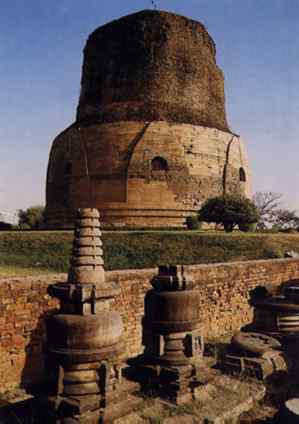 Buddhism is all about the essence of dharma, which shape the karma of mortals for many lifetimes. Prince Siddhartha was born in the year 623 B.C. in a royal clan of Nepal in Lumbini at Nepal. Everyone believed that he will be a great warrior but at the age of 29, he abandoned all royal luxury and family to attain self-realization. The popular Buddhist sites in India are Bodh Gaya, Sarnath, Vaishali, and Ajanta & Ellora caves.
Buddhism is all about the essence of dharma, which shape the karma of mortals for many lifetimes. Prince Siddhartha was born in the year 623 B.C. in a royal clan of Nepal in Lumbini at Nepal. Everyone believed that he will be a great warrior but at the age of 29, he abandoned all royal luxury and family to attain self-realization. The popular Buddhist sites in India are Bodh Gaya, Sarnath, Vaishali, and Ajanta & Ellora caves.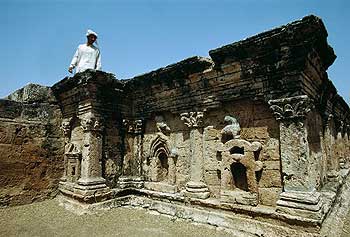 It is one of the finalized list of the top 10 most endangered sites in Asia.
It is one of the finalized list of the top 10 most endangered sites in Asia.
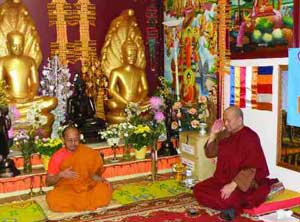 << Ven. Rath Sam, left, of the Cambodian Buddhist Temple on Hazeldean Road in Stittsville and Bhante Kovida, right, take part in a meditation session led by Bhante Kovida at the Temple on Thursday evening, May 17.
<< Ven. Rath Sam, left, of the Cambodian Buddhist Temple on Hazeldean Road in Stittsville and Bhante Kovida, right, take part in a meditation session led by Bhante Kovida at the Temple on Thursday evening, May 17. << Entrance to the Empty Gate Zen Buddhist Center (All photos courtesy of Tammy Quackenbush)
<< Entrance to the Empty Gate Zen Buddhist Center (All photos courtesy of Tammy Quackenbush) << Abbot Jason Quinn
<< Abbot Jason Quinn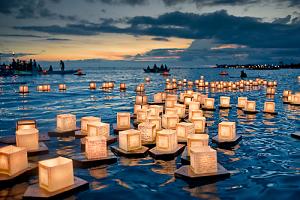 Lantern Floating Hawai'i 2012 will culminate the day-long public celebrations of one of the largest Memorial Day observances in the U.S.A. at the Ala Moana Beach Park (
Lantern Floating Hawai'i 2012 will culminate the day-long public celebrations of one of the largest Memorial Day observances in the U.S.A. at the Ala Moana Beach Park ( 





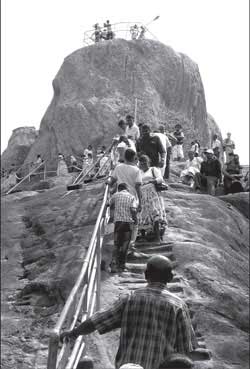 << Pilgrims at Mihintale
<< Pilgrims at Mihintale << Kaludiya Pokuna monastery complex
<< Kaludiya Pokuna monastery complex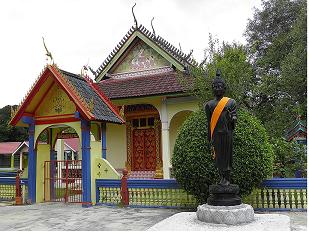 << Wat Phothivihan, a typical Buddhist temple in Muslim majority Kelantan
<< Wat Phothivihan, a typical Buddhist temple in Muslim majority Kelantan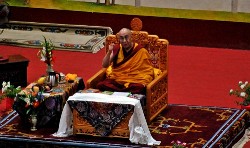 << His Holiness the Dalai Lama gives introductory teachings on Buddhism at Upper Tibetan Children's Village School, Dharamshala, India on June 3, 2011. (Phayul photo/Norbu Wangyal)
<< His Holiness the Dalai Lama gives introductory teachings on Buddhism at Upper Tibetan Children's Village School, Dharamshala, India on June 3, 2011. (Phayul photo/Norbu Wangyal)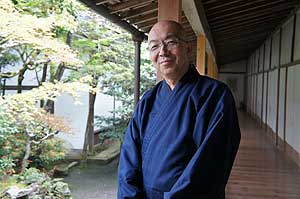 << News photo
<< News photo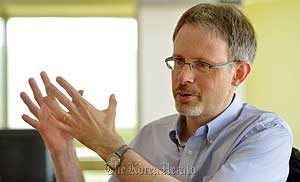 << Belgian-born professor says Jogye Order's rigid stance has left internal conflicts unresolved
<< Belgian-born professor says Jogye Order's rigid stance has left internal conflicts unresolved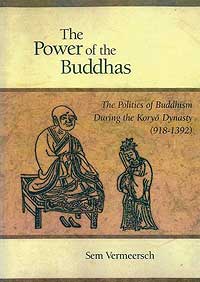 He has published a number of studies and books in English that offer a deeper understanding of Korean history and culture for international audiences. Vermeersch is also the author of "The Power of the Buddhas: The Politics of Meditation During the Koryo Dynasty" published by Harvard University Asia Center.
He has published a number of studies and books in English that offer a deeper understanding of Korean history and culture for international audiences. Vermeersch is also the author of "The Power of the Buddhas: The Politics of Meditation During the Koryo Dynasty" published by Harvard University Asia Center.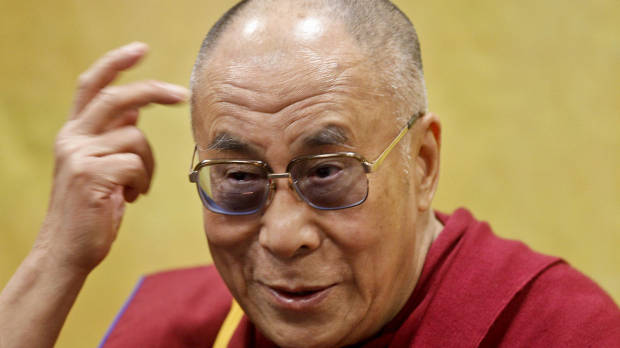 "Look at China now, the moral crisis, corruption – immense," he said, adding that China had "no proper rule of law."
"Look at China now, the moral crisis, corruption – immense," he said, adding that China had "no proper rule of law."